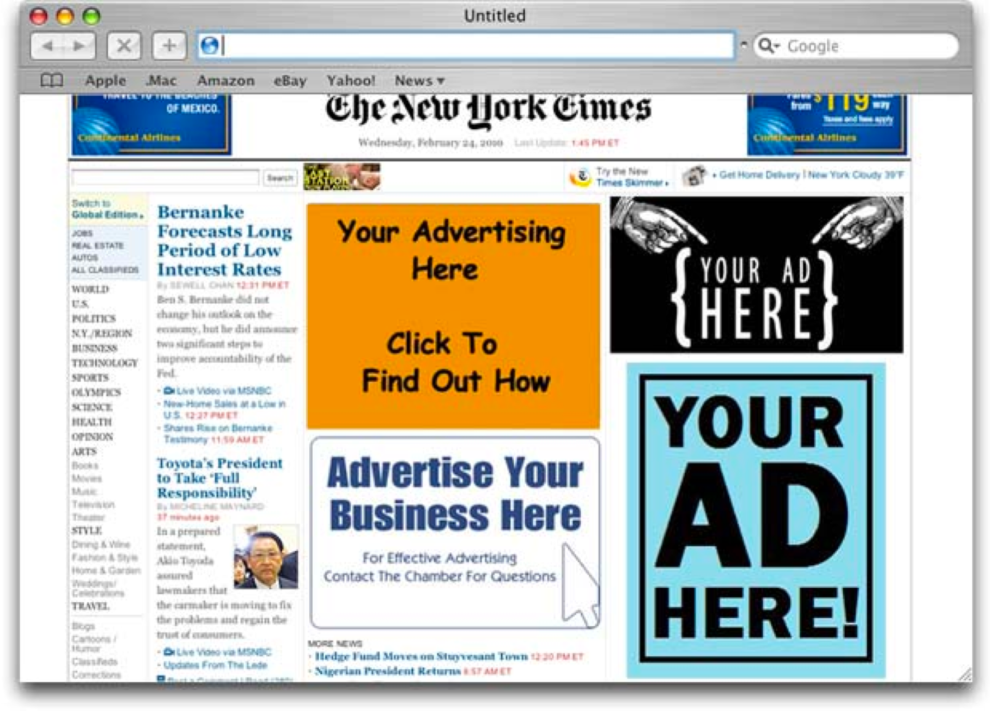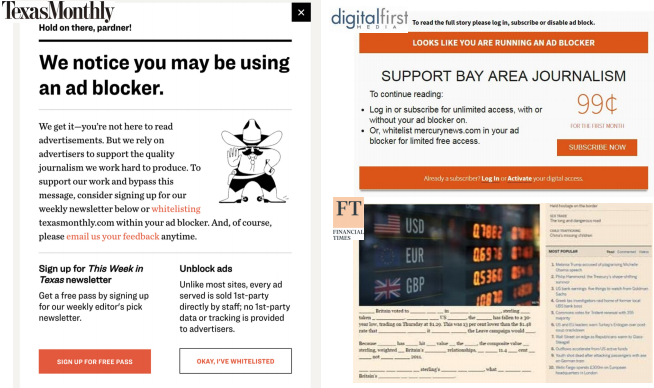Blog
What publishers can learn from adblockers
Almost half of all internet users are currently using ad blockers, and Google itself has launched a native adblocker in its web browser Chrome. Digiday predicts the cost to publishers could exceed $35 billion by 2020. What can publishers learn from this large population of readers that block ads?
Need for quality product experiences
Most news readers are not against ads in general, they’re just against bad ad experiences. A survey from Google found that 63% of users chose to install an adblocker because there were too many ads overall, with too many intrusive ads as well (such as auto-play videos or pop-ups). Hubspot even found that 68% of adblocking users would be willing to view ads if they aren’t “too annoying”.

Additionally, such ads contribute to a slow down of publishers’ websites. Our research found that blocking ads on a typical news website would increase loading speed by 7x, from 22.53 seconds to 3.2 seconds. With 53% of digital readers likely to abandon a page that takes longer than three seconds to load, we can see concretely how current ad strategies are leading to negative product experiences for many news readers today.
Readers are willing to pay
Just because readers are blocking ads, it doesn’t mean they are against paying for the news content in one form or another. A majority of adblock users (76%) agree that publishers have the right to earn revenue on the content they publish. It’s often due to previous negative experiences with ads that users turn to adblock technology — nearly a quarter of users with adblockers are open to paying for an ad-free reading experience.
That’s one reason why American news website Salon launched a feature last year to allow visitors to try an ad-free version of their website for a short time, charging just 50 cents for an hour. They also launched an ad-free version of their mobile app, charging $4.99 per month. This is not the first time Salon has experimented with how to address adblocking users. Previously they had tried asking adblocking users to allow the site to harness their computer processors to mine cryptocurrency, however this was stopped after a brief test.
Find other ways of creating value
Last year we examined how publishers can turn their adblocking users into subscribers, with great examples from Digital First Media, The Financial Times and Texas Monthly. Since then, we’ve seen more examples come out of how publishers are creating value from their adblocking users by moving them forward in the conversion funnel.

Many publishers are now merging their anti-ad block and anti-paywall block strategies together. With Google starting to block publishers from detecting when readers are incognito mode (and those able to bypass paywalls that limit the number of stories in a month), publishers have been pushed to become more creative. This new change by Google impacted 33% of publishers with paywalls, and we’re seeing many of them come out with “registration walls” to cope. Now readers on sites such as The New York Times are asked to register for free by giving their email address in order to read any content. This allows The Times to limit articles per account instead of per browser/device. Asking for an email address was one of the tactics used by publishers trying to create value out of adblocking users as well, so we can foresee strategies for combating these two types of users only further merging in the future.
Other technology options have come out for publishers, such as Scroll which allows readers to access ad-free experiences on a variety of participating publisher websites for a set monthly fee. While Scroll has drawn comparisons to Apple News+, readers are on the publishers’ own website and thus developing habits with publishers directly. It will also help address many of the speed and UX complaints readers have about ad-heavy news websites today.
[Ad blocking] used to be the main priority two years ago; now we have one word: subscriptions. We have a more narrow scope, and we don’t want to lose energy trying to get people to turn off an ad blocker.
Pierre Buffet, head of digital at Le Monde
Ultimately the backlash against ads might serve to only further encourage publishers in their transformation from ad-driven to reader-supported. Even for publishers such as Le Monde which has seen an increasing number of users blocking ads on mobile, they know they need to focus on the important end goal: driving direct reader revenues.
This article was written by Mary-Katharine Phillips, Media Innovation Analyst at Twipe from 2017 – 2021.
Other Blog Posts

Stay on top of the game
Subscribe to Twipe’s weekly newsletter to receive industry insights, case studies, and event invitations.
"(Required)" indicates required fields

